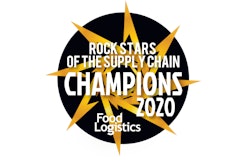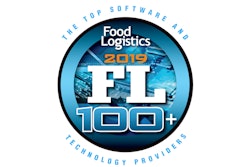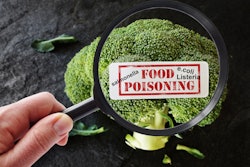
idcAs the digital economy continues to grow, the internet of things (IoT) technology has transitioned from a futuristic idea to a tactical tool nearly any logistics company can implement in their supply chain. Sensors and IoT tools are transforming traditional asset tracking to intelligent supply chains that are capable of earning logistics companies a higher ROI. In fact, supply chains were forecasted to be some of the biggest spenders on IoT solutions in 2019, with $197 billion spent by the manufacturing industry and $71 billion spent by transportation companies.
It’s not hard to see why logistics companies are investing in IoT. Sensors enable companies to accurately ask and answer important questions relating to performance, risk management, forecasting and return on investment. Food laws and regulations such as the Food and Drug Safety Act are putting significant pressure on supply chains to record more information and increase transparency, something that IoT technology can help simplify. Trends in consumer preferences such as the farm to fork movement also put pressure on food companies to transparently track food during every step of its journey from harvest activities to the store shelf.
When IoT technology was first introduced, the high price turned away many small- and mid-sized logistics companies. Now, as the technology becomes more commonly implemented and prices decrease, sensors and other IoT technology are becoming vital for supply chains of all sizes to invest in to keep up with regulations and consumer demands. This helps them stay competitive in the marketplace and achieve higher outputs and ROI.
The big question facing most logistics companies getting started with IoT is how to create a strategy and invest in the right technology, in the right places, to create a smarter supply chain. By focusing efforts on improving quality, time and conditions along the supply chain, food logistics companies can reap the many benefits an intelligent supply chain has to offer.
Increase the Quantity of Outputs through Intelligent Monitoring
In the United States, 40 percent of all food is lost or wasted due to unacceptable quality before it goes to market. This is much higher than the global average, which is around 30 percent. With almost half of all food going to waste, companies would be much more profitable if they could identify where along the food supply chain is causing spoilage problems so they can implement fixes and increase output. That’s where IoT comes in. Sensors routinely collect and transmit data, providing intelligence into the location, position, speed, temperature, pressure and much more in real-time. IoT gives operations managers the insight to identify abnormalities or trends that ultimately impact output.
Sensors and IoT also help better-inform supply and demand. On the retailer side, IoT data can inform overall demand for each product and accurately forecast based on actual trends backed by data. At the same time on the farm, growers can plan how much particular crop to grow based not only on demand, but also important factors that impact quantity such as weather patterns. The logistics companies in the middle of the supply chain benefit from more accurate planning of not only the quantity that needs transporting, but the exact conditions the goods are in. This helps operations managers to plan routes more optimally and with the right equipment to maintain the goods. By more accurately predicting and fulfilling supply and demand, the entire supply chain can benefit from higher outputs and less waste.
Optimize Time and Resources
One of the best ways to improve efficiencies throughout the supply chain is optimizing time management on the road. Data from sensors, supply chain logistics, weather and traffic can be used to predict and optimize travel time. This allows managers to reduce travel time, plan cross-dock schedules more effectively and manage which drivers need to be where to provide the best route depending on traffic, weather and season.
Data can also be combined with analytics and machine learning to identify patterns in transit times and delays under a number of circumstances. This information is typically presented in easy-to-read graphs or charts and can be accessed in real time while employees are in route using tablets or smartphones so that everyone can stay informed along the supply chain. The ability to immediately notify customers, rebook warehouse materials or reschedule docking operations help logistics managers optimize resources and time.
Ensure Food Safety Requirements are Met to Reduce Waste
Food safety requirements mean that logistics companies need to monitor a number of different conditions at every stage of the transportation and storage processes. Sensors help measure and monitor conditions including temperature, humidity and other environmental conditions so that perishable foods don’t spoil. This data can also help quantify shelf life so managers can make more informed decisions such as which shipments need to be expedited to market in order to reduce waste.
Weather conditions can have an enormous impact on logistics. If a storm, flood or other disaster hinders transportation, a number of key stakeholders in the supply chain are impacted. Through the use of IoT, workers can determine alternate routes, such as transferring a truck shipment to a train, that isn’t impacted by road conditions. Having the power of IoT on a mobile device to quickly coordinate alternatives and alert the parties involved helps ensure that even shipments that need to be rerouted will reach the endpoint as efficiently as possible, therefore reducing waste and saving money.
While the benefits of IoT are clear, it’s still relatively early in its adoption in small- to mid-sized logistics businesses. As the technology matures and prices become more affordable, IoT technology is an important investment to make to increase outputs and profits. With many large supply chains already implementing the technology, IoT is a key component for staying competitive and compliant in an increasingly challenging market while increasing overall ROI.



















